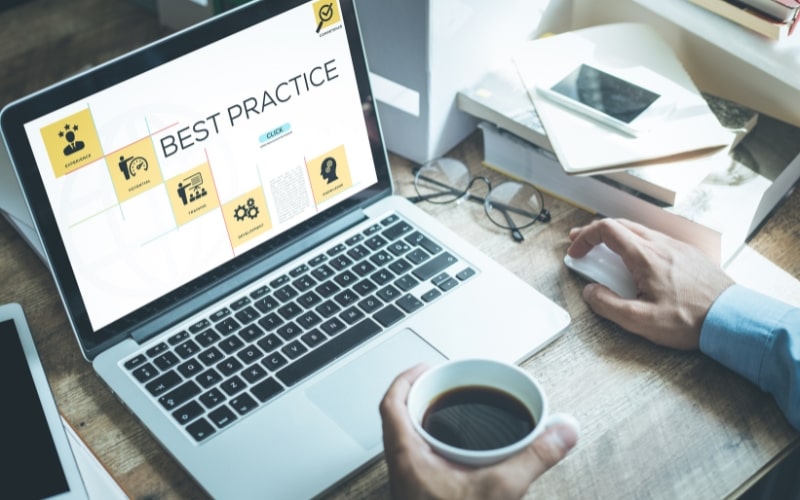Email marketing is a powerful tool that businesses can leverage to engage with their audience, build relationships, and drive sales. However, with the increasing volume of emails that consumers receive daily, standing out in the inbox is becoming more challenging. Personalization is the key to capturing attention and fostering a connection with your recipients. This blog explores effective strategies to personalize your emails for maximum engagement, leading to improved traffic and sales for your website.
Understanding Email Personalization
Email personalization goes beyond simply addressing the recipient by their first name. It involves tailoring the content of your emails based on the recipient’s preferences, behavior, and demographic information. This approach makes the email content more relevant and engaging to the recipient, increasing the likelihood of them taking the desired action.
Personalization can be achieved through various methods, including dynamic content, segmentation, behavioral triggers, and data analytics. By utilizing these techniques, marketers can create a more personalized experience that resonates with their audience, fostering loyalty and driving conversions.
Collecting and Analyzing Data
The foundation of effective email personalization is data. To personalize your emails effectively, you need to collect and analyze data about your subscribers. This data can be gathered through various means, such as sign-up forms, purchase history, browsing behavior, and engagement with previous emails.
Once you have collected the data, it’s crucial to analyze it to identify patterns and insights that can inform your personalization strategy. For instance, understanding which products a subscriber has shown interest in or purchased can help you tailor future emails to their preferences. Similarly, analyzing engagement metrics such as open rates, click-through rates, and conversion rates can help you understand what type of content resonates with your audience.
Segmentation: The Backbone of Personalization
Segmentation involves dividing your email list into smaller groups based on specific criteria, such as demographics, behavior, or preferences. By segmenting your audience, you can create more targeted and relevant email campaigns that speak directly to the interests and needs of each group.
For example, you could segment your list based on age, gender, location, or purchase history. This allows you to send tailored messages that are more likely to resonate with each segment. For instance, a clothing retailer might send different emails to customers who have purchased men’s clothing versus those who have purchased women’s clothing, highlighting products that are more relevant to each group.
Dynamic Content for Personalized Experiences
Dynamic content allows you to customize different elements of your email based on the recipient’s data. This can include personalizing the subject line, images, and text within the email. By using dynamic content, you can create a more personalized experience that feels tailored to each recipient.
For example, if you run an online bookstore, you could use dynamic content to display different book recommendations based on the recipient’s past purchases or browsing history. This level of personalization can significantly increase engagement and drive more conversions.
Behavioral Triggers for Timely and Relevant Emails

Behavioral triggers are automated emails that are sent based on specific actions taken by the recipient. These triggers can include welcome emails, cart abandonment emails, post-purchase follow-ups, and more. By using behavioral triggers, you can send timely and relevant emails that are more likely to engage your audience.
For instance, if a subscriber adds items to their cart but doesn’t complete the purchase, you could send a cart abandonment email reminding them of the items and offering an incentive to complete the purchase. Similarly, a post-purchase follow-up email can thank the customer for their purchase and recommend related products they might be interested in.
Personalizing the Subject Line and Preheader Text
The subject line and preheader text are the first things a recipient sees when they receive your email. Personalizing these elements can significantly increase the chances of your email being opened. Including the recipient’s name, referencing their recent activity, or creating a sense of urgency can make your subject line and preheader text more compelling.
For example, instead of a generic subject line like “Check out our latest products,” you could use a personalized subject line like “John, we’ve picked some new arrivals just for you!” This small change can make a big difference in capturing the recipient’s attention and encouraging them to open your email.
Crafting Relevant and Engaging Content
The content of your email should be relevant and engaging to the recipient. This means tailoring your message to their interests, preferences, and behavior. Using the data you’ve collected, you can create content that speaks directly to the recipient’s needs and desires.
For example, if you know that a subscriber is interested in fitness, you could send them content related to workout tips, healthy recipes, and fitness products. By providing valuable and relevant content, you can build a stronger connection with your audience and increase engagement.
Leveraging User-Generated Content
User-generated content (UGC) is a powerful way to personalize your emails and build trust with your audience. UGC includes reviews, testimonials, photos, and videos created by your customers. By incorporating UGC into your emails, you can showcase real-life experiences and social proof, making your emails more relatable and trustworthy.
For instance, you could feature customer reviews of your products, highlight user-submitted photos of them using your products, or share testimonials from satisfied customers. This not only adds a personal touch to your emails but also encourages other recipients to engage with your brand.
Utilizing Personalization Tokens
Personalization tokens are placeholders in your email that are replaced with the recipient’s data when the email is sent. These tokens can be used to personalize various elements of your email, such as the recipient’s name, location, or recent activity.
For example, you could use personalization tokens to include the recipient’s name in the subject line, reference their recent purchase in the email body, or suggest products based on their browsing history. This level of personalization can make your emails feel more tailored and relevant, increasing engagement.
Creating a Personalized Email Journey

A personalized email journey involves creating a series of emails that are tailored to the recipient’s behavior and preferences. This journey can include welcome emails, onboarding sequences, promotional emails, and more. By creating a personalized email journey, you can nurture your relationship with the recipient and guide them towards taking the desired action.
For example, when a new subscriber signs up for your email list, you could send a welcome email introducing your brand, followed by a series of onboarding emails that provide valuable content and encourage engagement. As the recipient interacts with your emails, you can tailor future messages based on their behavior and preferences, creating a personalized experience that drives engagement and conversions.
A/B Testing for Continuous Improvement
A/B testing is a valuable tool for optimizing your email personalization strategy. By testing different elements of your emails, such as subject lines, content, and call-to-action buttons, you can identify what works best for your audience and continuously improve your campaigns.
For example, you could test two different subject lines to see which one generates a higher open rate, or experiment with different content formats to see which one drives more engagement. By analyzing the results of your A/B tests, you can make data-driven decisions that enhance your personalization efforts and maximize engagement.
Integrating Personalization with Automation
Email automation allows you to send personalized emails at scale, without manually crafting each message. By integrating personalization with automation, you can create targeted and relevant email campaigns that reach your audience at the right time.
For example, you could set up automated workflows that send personalized emails based on specific triggers, such as a new subscriber signing up, a customer making a purchase, or a recipient engaging with your content. By automating these processes, you can ensure that your audience receives timely and relevant emails that drive engagement and conversions.
Leveraging Artificial Intelligence for Personalization
Artificial intelligence (AI) is transforming the way businesses personalize their emails. AI-powered tools can analyze vast amounts of data to identify patterns and insights that inform your personalization strategy. By leveraging AI, you can create more sophisticated and effective personalization efforts that drive engagement and conversions.
For example, AI can analyze your subscribers’ behavior to predict which products they are likely to be interested in, or identify the best time to send your emails for maximum engagement. By incorporating AI into your email marketing strategy, you can enhance your personalization efforts and achieve better results.
Ensuring Privacy and Data Security
While personalization is essential for maximizing engagement, it’s crucial to ensure that your data practices comply with privacy regulations and that your subscribers’ information is secure. Transparency about how you collect, use, and protect data is vital for building trust with your audience.
Make sure to obtain explicit consent from your subscribers before collecting and using their data, and provide clear information about how their data will be used. Additionally, implement robust security measures to protect your subscribers’ information from unauthorized access or breaches.
Measuring the Impact of Personalization
To evaluate the effectiveness of your personalization efforts, it’s important to track and measure key metrics such as open rates, click-through rates, conversion rates, and revenue generated from your email campaigns. By analyzing these metrics, you can gain insights into what is working and identify areas for improvement.
For example, if you notice that personalized emails have higher open and click-through rates compared to non-personalized emails, this indicates that your personalization strategy is resonating with your audience. By continuously monitoring and analyzing your performance metrics, you can refine your personalization efforts and achieve better results.
Best Practices for Email Personalization

To maximize the effectiveness of your email personalization efforts, consider the following best practices:
- Start with a clear goal: Define the objectives of your personalization efforts, such as increasing engagement, driving conversions, or improving customer retention. This will help you create a focused and effective strategy.
- Collect relevant data: Gather data that is relevant to your personalization goals, such as demographic information, purchase history, and engagement metrics. Ensure that you have the necessary permissions to use this data.
- Segment your audience: Divide your email list into smaller segments based on specific criteria, such as behavior, preferences, or demographics. This will allow you to create more targeted and relevant email campaigns.
- Use dynamic content: Personalize different elements of your email, such as the subject line, images, and text, based on the recipient’s data. This will create a more personalized experience that resonates with your audience.
- Leverage behavioral triggers: Set up automated emails that are sent based on specific actions taken by the recipient, such as signing up for your list, making a purchase, or abandoning their cart. These timely and relevant emails can drive higher engagement and conversions.
- Test and optimize: Continuously test different elements of your emails, such as subject lines, content, and call-to-action buttons, to identify what works best for your audience. Use the insights from your tests to refine your personalization strategy and improve your results.
- Ensure privacy and security: Comply with privacy regulations and implement robust security measures to protect your subscribers’ information. Be transparent about how you collect, use, and protect data to build trust with your audience.
Conclusion
Personalizing your emails is essential for standing out in the crowded inbox and maximizing engagement with your audience. By leveraging data, segmentation, dynamic content, behavioral triggers, and automation, you can create personalized email campaigns that resonate with your recipients and drive higher engagement and conversions.
By following best practices and continuously testing and optimizing your personalization efforts, you can achieve better results and build stronger relationships with your audience. Thus, improving traffic and sales for your website. Read more on the other reasons why your website isn’t getting traffic.


